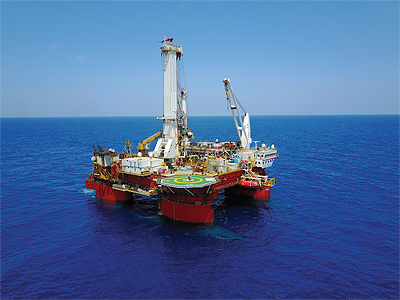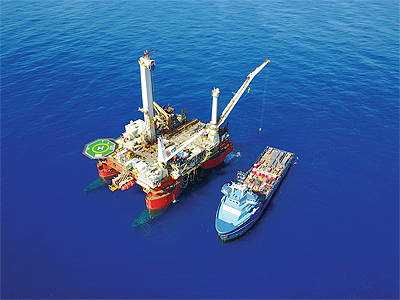Helix Energy Solutions Advances Offshore Well Intervention
Reliable intervention
Helix Energy Solutions Group (Helix) is a specialist oil and gas service company, focused on the subsea and deepwater sectors. Helix Well Ops – one of the two primary segments that form Helix, has grown a reputation for rigless offshore well intervention, as it became the first of its kind to run such an operation in 1987. “The introduction of rigless well intervention proved to be a market  changer, because up until that time it was inconceivable to run the process, without bringing in a drilling rig, which is a slow and expensive proposition,” Helix Well Ops’s Senior Vice President, David Carr begins. The company’s sister organisation – Canyon Offshore, which makes up the second primary business segment, supplies its customers (including Helix Well Ops) with modern and innovative ROVs (remotely operated vessels), and is renowned for its subsea engineering and tooling services.
changer, because up until that time it was inconceivable to run the process, without bringing in a drilling rig, which is a slow and expensive proposition,” Helix Well Ops’s Senior Vice President, David Carr begins. The company’s sister organisation – Canyon Offshore, which makes up the second primary business segment, supplies its customers (including Helix Well Ops) with modern and innovative ROVs (remotely operated vessels), and is renowned for its subsea engineering and tooling services.
“Following the landmark job of 1987, we continued to expand our fleet. We introduced the first ever dedicated well intervention semi-submersible vessel – our Q4000, which is working in the Gulf of Mexico,” David notes. Named for its 4000-tonne capacity, the platform entered service in 2002 and has since built a respectable track record of well intervention. Helix then launched the Q5000 in 2015, and it is completing the construction of the third vessel of the series – the Q7000, which is expected to begin operations in 2019. The new unit will be able to perform riser-based well intervention and decommissioning operations in water depths ranging from 85 metres to 3000 metres, and is equipped with Helix’s Intervention Riser System (IRS). It also will be capable of performing a number of production enhancement operations, well clean up, field development support, as well as suspension, tubing removal, and sea floor clearance, as part of its decommissioning capabilities.
“Another notable vessel in our fleet is the Well Enhancer, which closely resembles the pioneering Seawell. They are the only two vessels in the world that can support saturation diving and light well intervention simultaneously,” David explains. “We have also recently added two large monohull ships, the chartered Siem Helix 1 and Siem Helix 2, that were built for the work we are doing for Petrobras in Brazil, and these are actively involved in the development, intervention, and plugging and abandonment of wells in deepwater.”
New innovations
Plugging and abandonment has indeed been a plentiful source of business opportunities for Helix since the crash of oil prices in 2014. “We are currently working as part of a large project of suspending subsea wells in West Africa, while in the North Sea, we have deployed our riserless fleet to do some preparation works, such as saturation diving on some of the old wells, cleaning them up, and doing the lower suspension and abandonment, which significantly reduces the risk when the rig is brought in, because you already know what you are going to find when you get there,” David clarifies, also sharing that with the Q7000 vessel, Helix expects to be able to offer a full abandonment cycle service in the North Sea from 2019 onwards. “To do that, we will make the most of our new tool – the Riserless Open-Water Abandonment Module (ROAM) tool, which will allow us to pull production tubing in a safe and environmentally controlled way. Utilising this technology will also open the door for us to a bunch of in-situ well abandonment processes that have only been available through drilling rigs previously.
“We have also been doing a lot of coiled tubing stimulation in the Gulf of Mexico from our Q4000 and Q5000 vessels, as of late,” David points out, citing again the decline of oil price as a reason for the heightened activity in this segment, as well as the larger ROI potential this form of stimulation offers to operators. “It is a riser-based operation that offers a higher level of backup to the  client, and safety is always the most important thing in this area.” One of the most efficient technologies, developed by Helix, the riser-based intervention uses a high-pressure riser to contain the pressure during the intervention operation at lower costs for customers, largely thanks to the aforementioned IRS, which forms a direct connection from the intervention vessel to a subsea tree. “The system allows us to deliver subsea well access and well intervention work on wells from 80m to 3000m water depth. We also recently introduced a 15,000-psi version. Traditionally, it has only been possible to intervene on 15K wells by purchasing either a dedicated system, or by hiring an extremely expensive 15K rig,” David adds.
client, and safety is always the most important thing in this area.” One of the most efficient technologies, developed by Helix, the riser-based intervention uses a high-pressure riser to contain the pressure during the intervention operation at lower costs for customers, largely thanks to the aforementioned IRS, which forms a direct connection from the intervention vessel to a subsea tree. “The system allows us to deliver subsea well access and well intervention work on wells from 80m to 3000m water depth. We also recently introduced a 15,000-psi version. Traditionally, it has only been possible to intervene on 15K wells by purchasing either a dedicated system, or by hiring an extremely expensive 15K rig,” David adds.
Expert outlook
A strategic approach adopted by Helix saw the business join forces with other organisations and that benefitted not just the company, but all the other stakeholders in these partnerships. The group formed a powerful alliance with another main player in the oil and gas industry – Schlumberger, in 2015. OneSubsea, which is the latter’s daughter company has since been working with Helix to build jointly owned subsea equipment. “The incentive for OneSubsea is that it not only builds the equipment, but is also a 50 per cent stakeholder, which signifies a real transition from the traditional kind of OEM model, where the manufacturer builds something and then just sells it to operators. Now, in combination with Helix, OneSubsea builds, operates, and owns this equipment. The philosophy of everyone involved in this partnership is that we are working together towards the same end goal, which is getting the job done as quickly, efficiently and safely as possible,” David enthuses.
Providing an expert outlook on market conditions in the near future, he is confident that Helix will remain strong in the fields it already occupies, but also that the business can anticipate the opening of new opportunities in a number of geographical regions around the world in the years to come. “West Africa is a place that is of most interest to us. The maturity of the subsea and deepwater there, particularly in Nigeria and Angola, is getting to a point where the need for our services is becoming very compelling,” David states with certainty. “In recent history, there have been multiple seasonal projects during the winter, but it is still quite expensive for an operator to maintain a vessel throughout the whole year. Nevertheless, I expect to see dedicated well intervention vessels moving in full-time to the area very soon. The situation with the Asia-Pacific market is similar and we believe that the Malaysian, Indonesian and Australian markets will also become areas that would greatly benefit from our year-round presence.”
Helix Energy Solutions
Services: Subsea well intervention